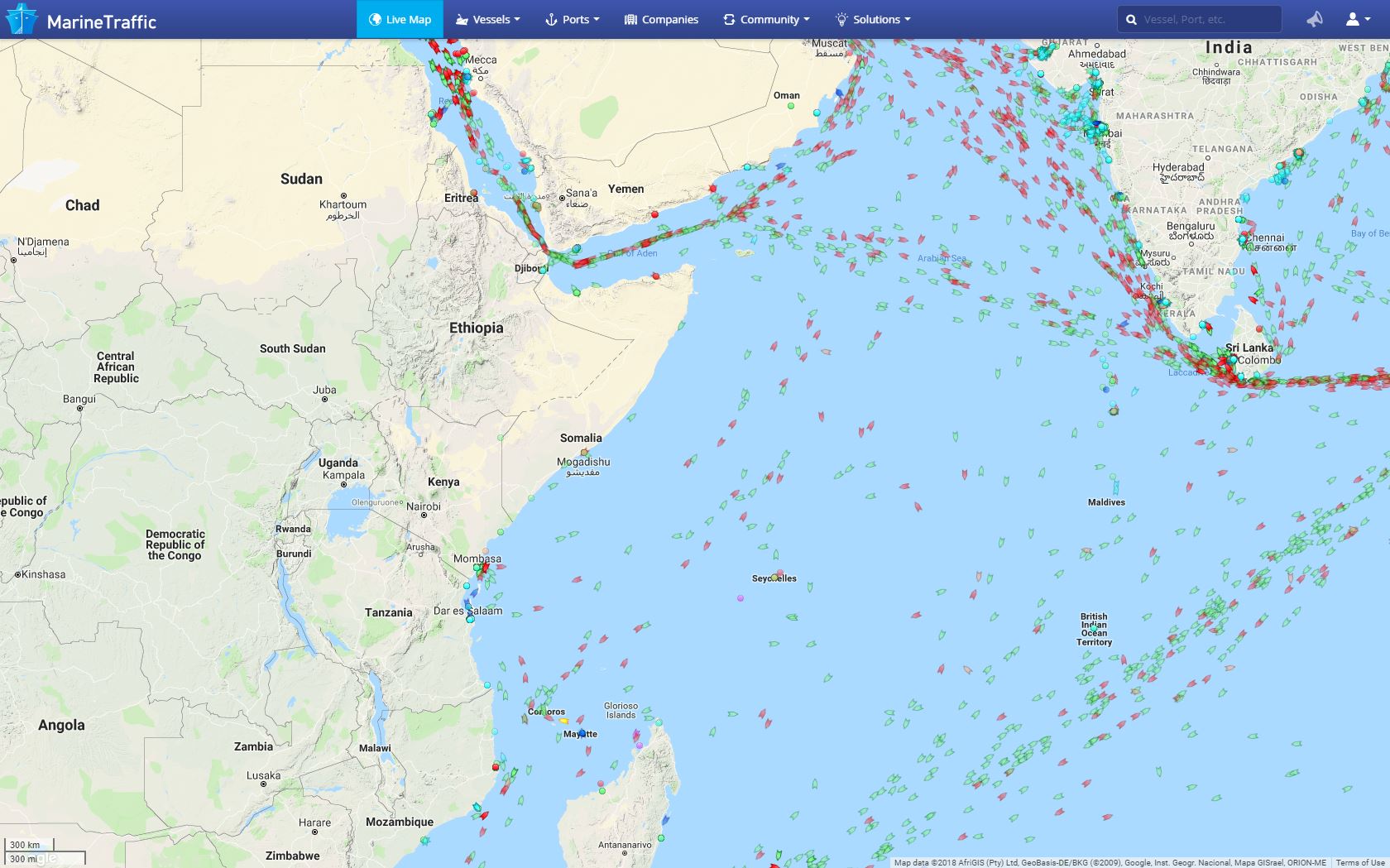In recent years there’s been an explosion in the amount, and availability, of maritime-related data. Tracking services, like MarineTraffic, have brought extraordinary visibility to ship movements worldwide, taking us from being clueless as to what’s happening at sea, to being able to pinpoint the location of all ocean-going vessels in a matter of seconds.
This data deluge is, if anything, just getting started. Thanks to companies like Planet, we now have high-resolution satellite imagery of the earth, which can be used to monitor everything from retail sales to coastal erosion. Next year, ICEYE will launch a constellation of radar satellites capable of imaging the entire planet every hour, even when it’s dark or cloudy. It’ll be joined in the increasingly crowded skies by Kleos Space and Hawkeye360, both of which plan to launch Low Earth Orbit (LEO) satellites to geolocate vessels via radio transmissions and radar. Then there’s Boeing’s Liquid Robotics, sea-based drones that collect data on submarines, fishing boats and pollution.
Having access to all this data is unprecedented. It could change the way we view and interact with the world around us. It could bring an end to illegal fishing, piracy and smuggling, and has the potential to solve an infinite number of business problems. There’s just one sticking point: many companies don’t know that they need all this data, much less how to use it in a materially beneficial way.

Running this data through generic analytical engines yields mediocre results at best. That’s because they don’t address the quality of the data, and lack the necessary domain expertise to understand it.
Take marine risk. Measuring the likelihood of a vessel having an accident, or being involved in smuggling, or disrupting the supply chain, are real problems which can make a real impact on decision making. Knowing where a vessel was in the past can’t really help in measuring such risks. It is only when applying the relevant domain expertise to clean, enrich, transform and interpret the data that you can start finding hidden signals. For example, connecting between the whereabouts of a vessel over time, its commercial status and actual draft, and the water depths in which it travels worldwide means we can calculate how much time it operates at dangerous depths (relative to its draft). This metric matters because vessels operating for longer periods at dangerous depths are up to 3.5 times more likely to run aground in the year ahead.
That’s why we’re big believers in the value of vertical AI, as articulated by one Bradford Cross. He argues that if you go beyond a generic analytical platform, and build a full-stack solution – everything from the raw data up – then you can create applications that deliver superior value and which can solve specific problems that no-one else can: first, because the analysis is tailored to the underlying data; and second, because it can’t be easily replicated.
Vessel operational profiles are a case in point. Constantly hoovering-up in raw data on how ships sail, where and when they stop and what weather they sail through helps us produce the 1500 operational risk factors that are unique to each and every vessel. Feeding in nautical charts and whether ships are sailing at night or by day can help us understand why accidents happen (e.g. 50% of grounding events in Norway take place between 1am and 6am). This proprietary level of insight can then be used to develop predictive models and in this way measure a vessel or a fleet’s propensity to have an accident in the year ahead.
To understand how vessels operate, we also look at how fast they sail, and how long they stay in port. Maersk-owned ships, for example, spend just under a quarter of their lives at port, i.e. they spend most of their time at sea, trying to make money. Ships belonging to the Iranian-backed Lebanese militia, Hezbollah, spend about 60% of their time in port (because making money isn’t their raison-d’etre).
At the end of the day, it’s not only about the amount of data you have, but what you do with it that counts.
